Author: Jake Huolihan
Originally bred by Hopsteiner as a replacement for Willamette hops, Experimental #04190 has been said to possess a noble-like character that goes great in lager styles. The most notable characteristics of #04190, which is a crossbreed of Fuggle and Cascade, include herbal and spicy while the fruitier aromas we’ve come to expect from more pungent hop varieties are quite low.
Alpha: 3.0 – 5.0%
Beta: 5.0 – 7.4%
Cohumulone: 29 – 32% of alpha acids
Total Oil: 0.8 – 1.9 mL/100g
Myrcene: unknown
Humulene: unknown
Caryophyllene: unknown
Farnesene: 4 – 5.0%
Linalool: 0.9 – 1.0%
Geraniol: unknown
Citral: unknown
Limonene: unknown
ß-Pinene: unknown
Parentage: cross of Fuggle and Cascade male
In a world dominated by hop-forward ales, it’s nice to see work is being done to produce varieties of a more mild-mannered nature. As a lover of lager beer, I tend to rely a lot on classic noble hops and was was excited to see what #04190 would bring to the table in this edition of The Hop Chronicles.
| MAKING THE BEER |
Given the description of #04190, I designed a lightly-hopped Pale Ale in hopes of allowing some of the subtleties of this experimental hop to shine through.
Experimental #04190 Pale Ale
Recipe Details
| Batch Size | Boil Time | IBU | SRM | Est. OG | Est. FG | ABV |
|---|---|---|---|---|---|---|
| 5.5 gal | 60 min | 30.1 IBUs | 3.7 SRM | 1.052 | 1.013 | 5.2 % |
| Actuals | 1.052 | 1.01 | 5.5 % | |||
Fermentables
| Name | Amount | % |
|---|---|---|
| Pale Malt (2 Row) US | 9.5 lbs | 90.48 |
| Vienna Malt | 1 lbs | 9.52 |
Hops
| Name | Amount | Time | Use | Form | Alpha % |
|---|---|---|---|---|---|
| Experimental #04190 | 45 g | 60 min | Boil | Pellet | 3.4 |
| Experimental #04190 | 10 g | 30 min | Boil | Pellet | 3.4 |
| Experimental #04190 | 30 g | 10 min | Boil | Pellet | 3.4 |
| Experimental #04190 | 30 g | 5 min | Boil | Pellet | 3.4 |
| Experimental #04190 | 30 g | 3 days | Dry Hop | Pellet | 3.4 |
Yeast
| Name | Lab | Attenuation | Temperature |
|---|---|---|---|
| Flagship (A07) | Imperial Yeast | 75% | 60°F - 72°F |
Notes
| Water Profile: Yellow Bitter in Bru’n Water Spreadsheet |
Download
| Download this recipe's BeerXML file |
After RO filtering the full volume of brewing liquor and weighing out the grains the day before brewing, I prepared a starter of Imperial Organics A07 Flagship yeast.
The following morning, I hit the power on my electric element and milled the grain while the water was heating.
Once the water reached strike temperature, I incorporated the grains into the full volume of liquor then checked to ensure I’d hit my target mash temperature.
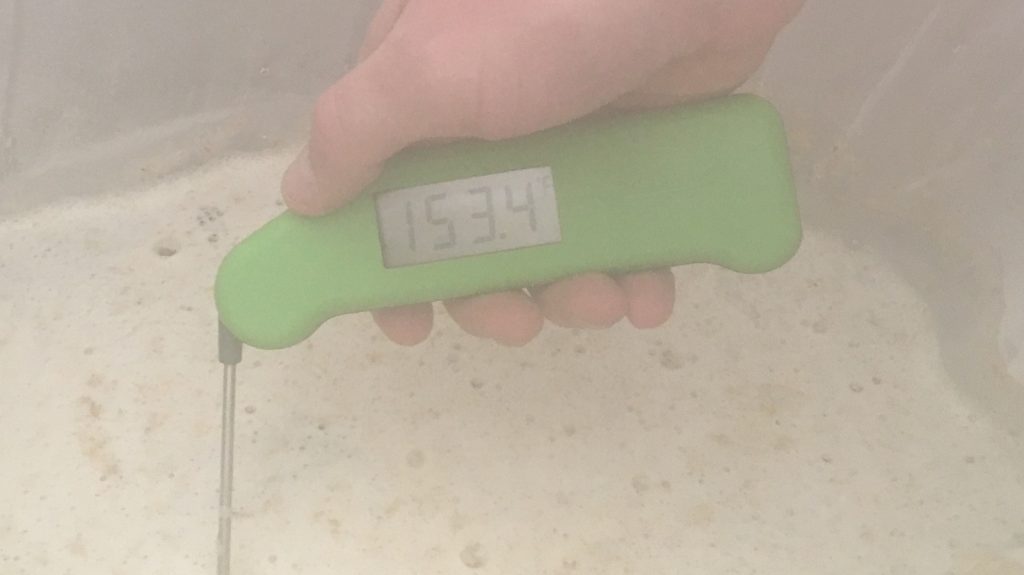
Following a 60 minute mash rest, I removed the grains from the kettle and turned the power to my element back on.

As the wort was heating, I measured out the kettle hop additions.
The wort was boiled for 60 minutes with hops added as stated in the recipe.
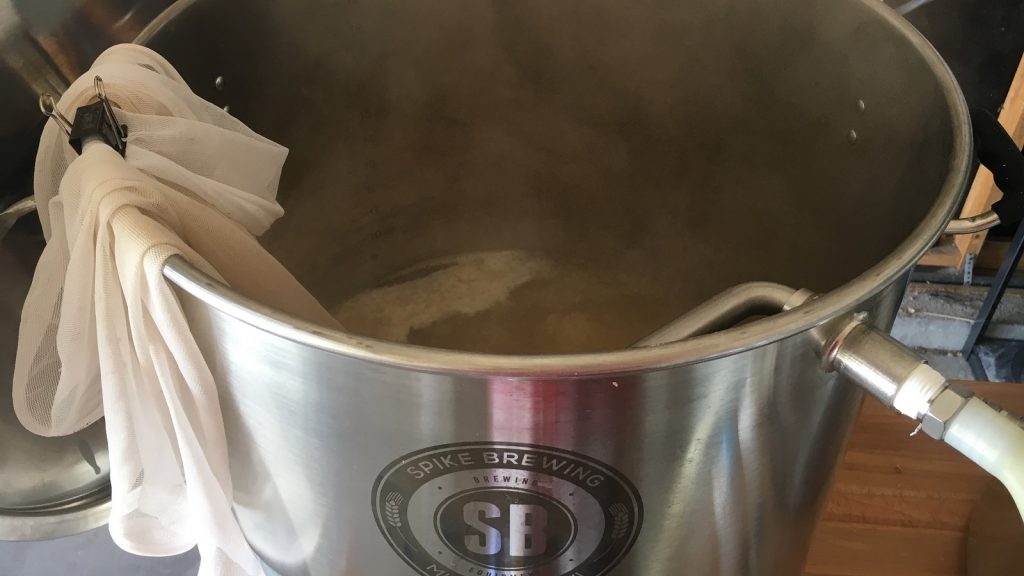
At the conclusion of the boil, I quickly chilled the wort to just above my groundwater temperature.
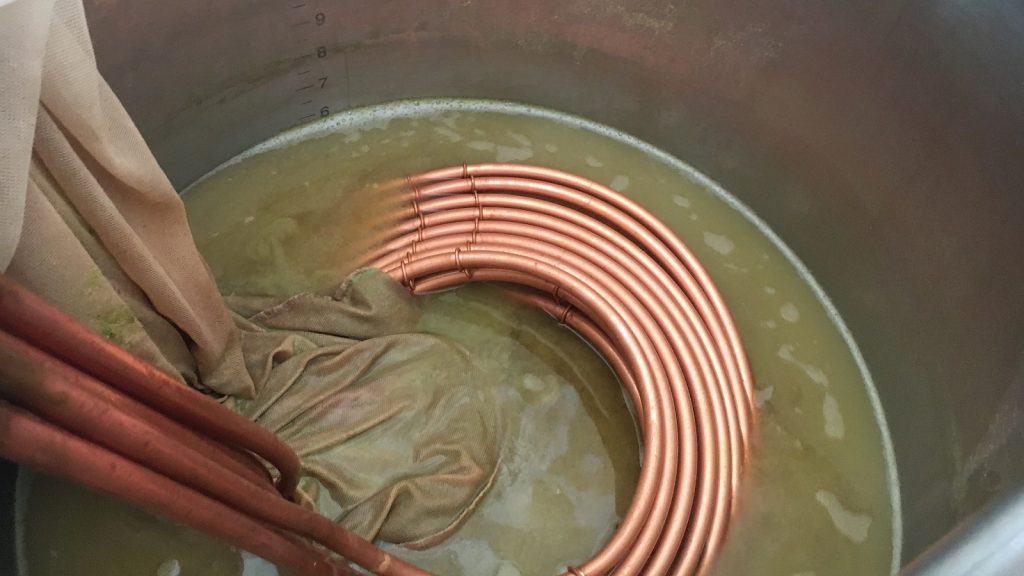
A hydrometer measurement at this point confirmed the wort was sitting at my target OG.
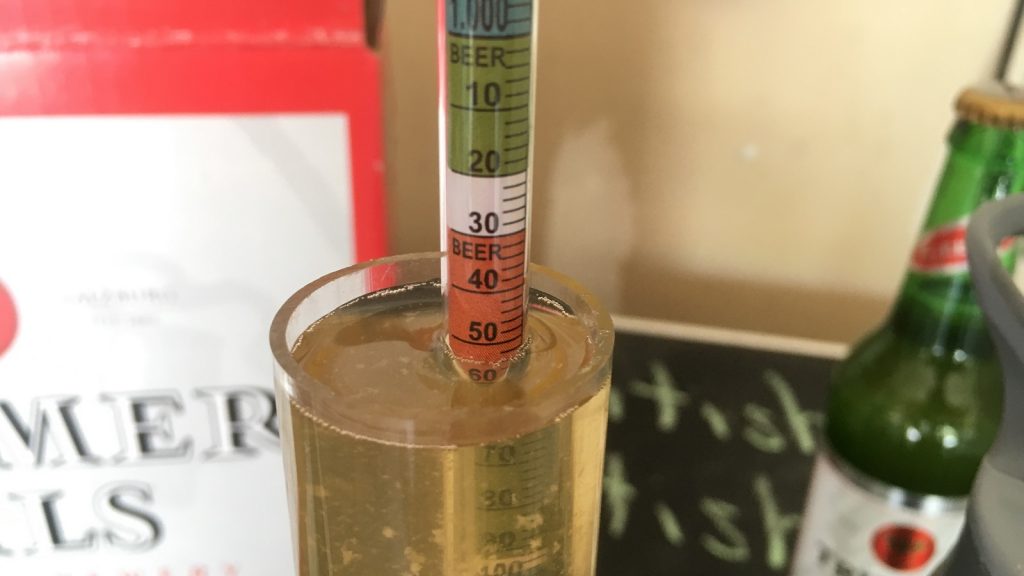
I filled a sanitized fermentor with wort and placed it in my temperature controlled chamber to finish chilling. The wort was stabilized at my desired fermentation temperature of 66°F/19°C a couple hours later, at which point I pitched the yeast. When I check on the beer 24 hours later, a nice kräusen had developed.
I noticed fermentation activity had died a few days later and took a hydrometer measurement that confirmed FG was reached before added the dry hop charge.
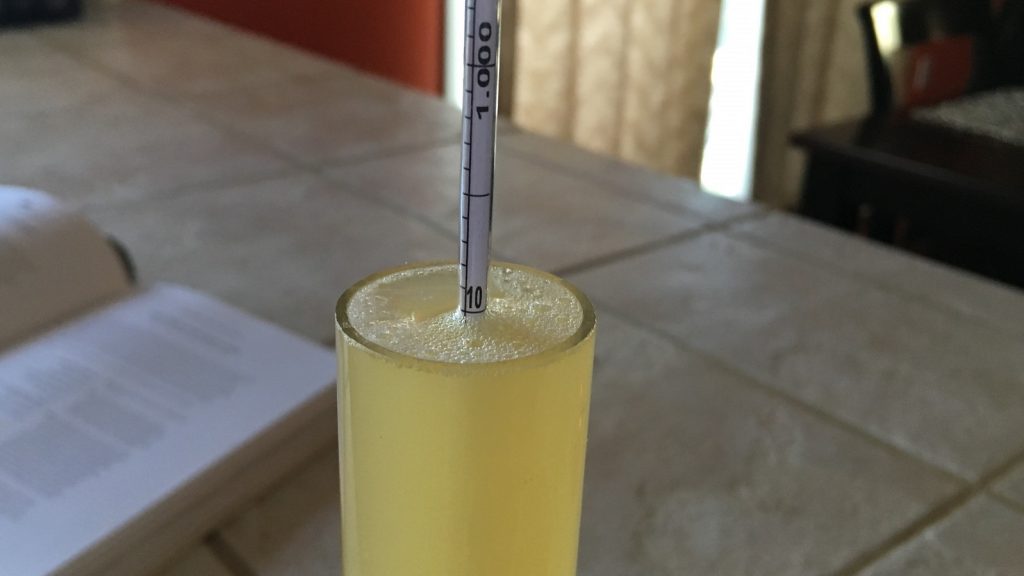
I let the dry hops mingle with the beer for 3 days before racking it to a keg where it was cold crashed and fined with gelatin. After a brief period of burst carbonation and another week or so of cold conditioning, the beer was ready to serve.
| METHOD |
Participants were instructed to focus only on the aromatic qualities of the beer before evaluating the flavor. For each aroma and flavor descriptor, tasters were asked to write-in the perceived strength of that particular characteristic on a 0-9 scale where a rating of 0 meant they did not perceive the character at all and a rating of 9 meant the character was extremely strong. Once the data was collected, the average rating of each aroma and flavor descriptor was compiled and analyzed.
| RESULTS |
A total of 13 people participated in the evaluation of this beer, all blind to the hop variety used until after they completed the survey. The average aroma and flavor ratings for each descriptor were plotted on a radar graph.
Average Ratings of Aroma and Flavor Perceptions
The 3 characteristics endorsed as being most prominent by participants:
| Aroma | Flavor |
| Apple/Pear | Tropical Fruit |
| Tropical Fruit | Stone Fruit |
| Melon | Melon |
The 3 characteristics endorsed as being least prominent by participants:
| Aroma | Flavor |
| Onion/Garlic | Onion/Garlin |
| Earthy/Woody | Earthy/Woody |
| Dank/Catty | Dank/Catty |
Participants were then asked to rate the pungency of the overall hop character.
 Next, they were instructed to identify beer styles they thought the hop would work well in.
Next, they were instructed to identify beer styles they thought the hop would work well in.
Finally, tasters were asked to rate how much they enjoyed the hop character on a 0 to 10 scale.
My Impressions: Compared to some of the hop varieties I’ve recently run through The Hop Chronicles, #04190 was incredibly reserved as the beer didn’t slap me in the face with super fruity aroma and flavor. That’s not to say it was bad, far from it! I picked up a very nice subtle spice character in this single-hopped #01490 beer with the slightest hint of fruit in the background, which worked really well together. Overall, I definitely think #04190 is a fantastic new variety that will serve as a killer backbone for modern lagers, Bitter, and other less hop forward styles.
| CONCLUSION |
Newer subtle hops like Hopsteiner’s Experimental #04190 may not be as sexy as some of the super pungent new school hops of today, but they are just as deserving of attention, as they allow those of us who enjoy classic styles such as lager the ability to experiment with new characteristics while maintaining some semblance of stylistic integrity. Interestingly, blind participants perceived decent levels of tropical and stone fruit in the single hopped #04190 beer, which has be wondering about the impact expectation may have had as well as if my slightly higher hop dosage perhaps played a role. Regardless, the ratings on those descriptors were still a bit lower than we’ve seen with other popular IPA hops, while ratings on apple/pear, melon, floral, and spicy were a tad higher than we usually see.
Overall, I’m quite pleased with this experimental offering from Hopsteiner and look forward to using it in future lagers to see how it plays. It’s easy to gloss over some of lighter hops out there given the general preference for super pungency these days, but something is to be said for varieties that lend beer nice flavor that ties the other ingredients together.
If you have any thoughts on Hopsteiner’s Experimental #04190 hop, please share them in the comments section below!
Support for this edition of The Hop Chronicles comes from Hopsteiner, a leading grower, trader, and processor of high quality beer hops since 1845.
Support Brülosophy In Style!
All designs are available in various colors and sizes on Amazon!
Follow Brülosophy on:
FACEBOOK | TWITTER | INSTAGRAM
If you enjoy this stuff and feel compelled to support Brulosophy.com, please check out the Support Us page for details on how you can very easily do so. Thanks!




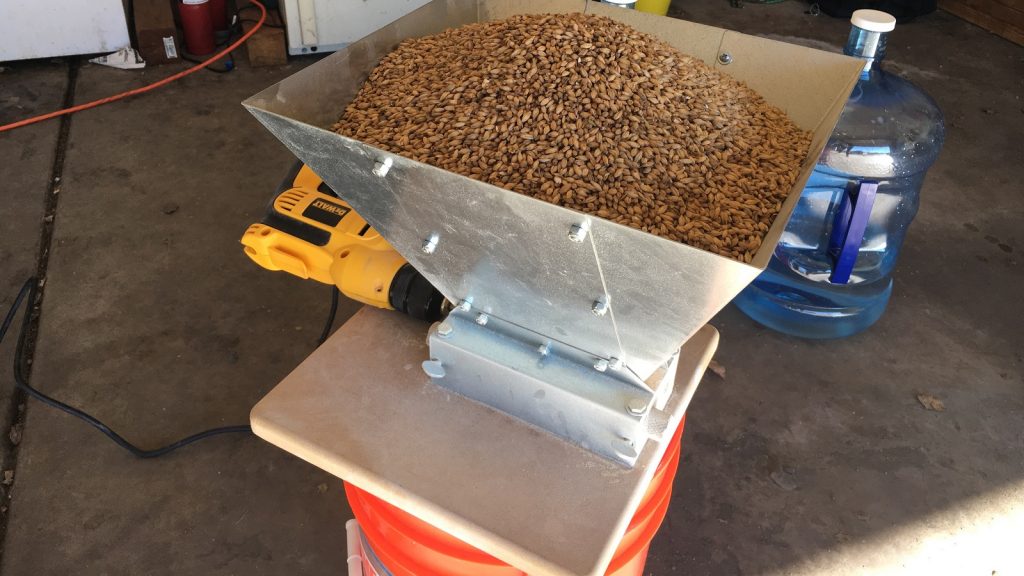


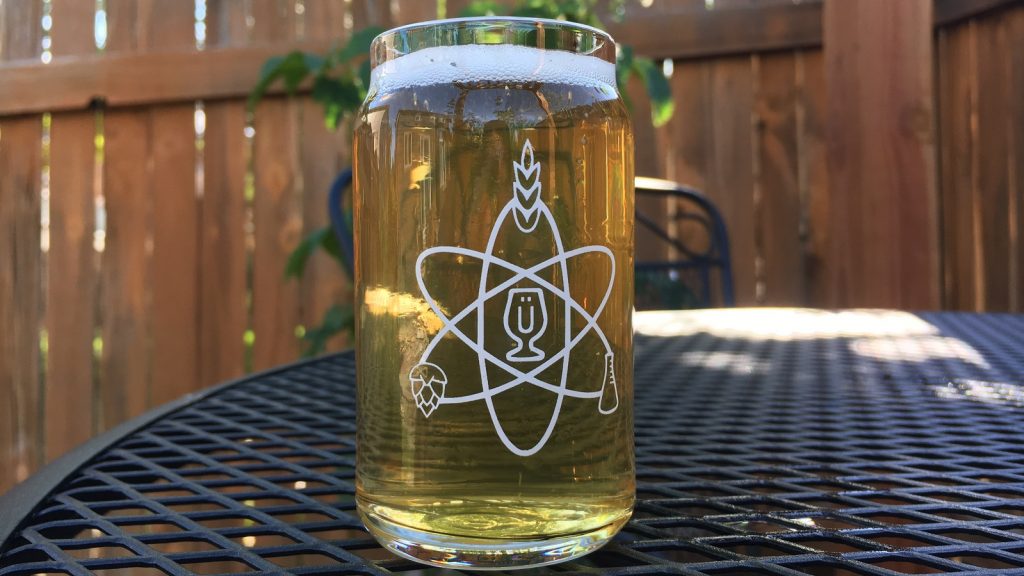
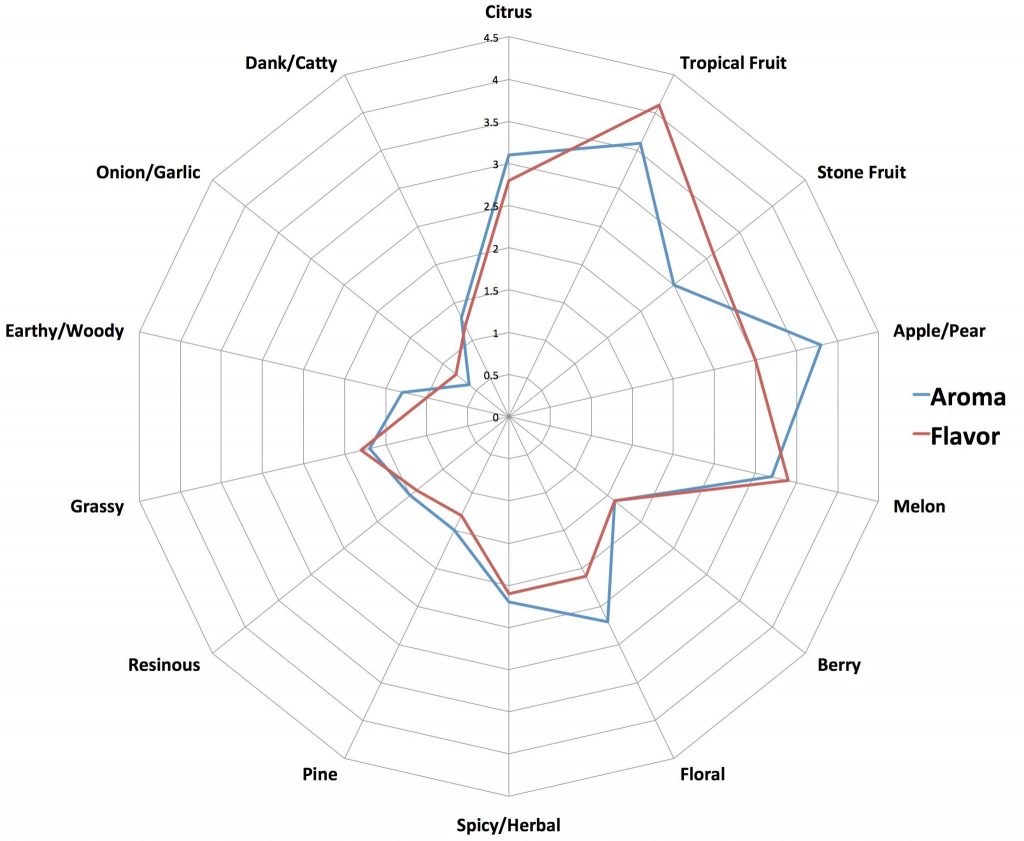
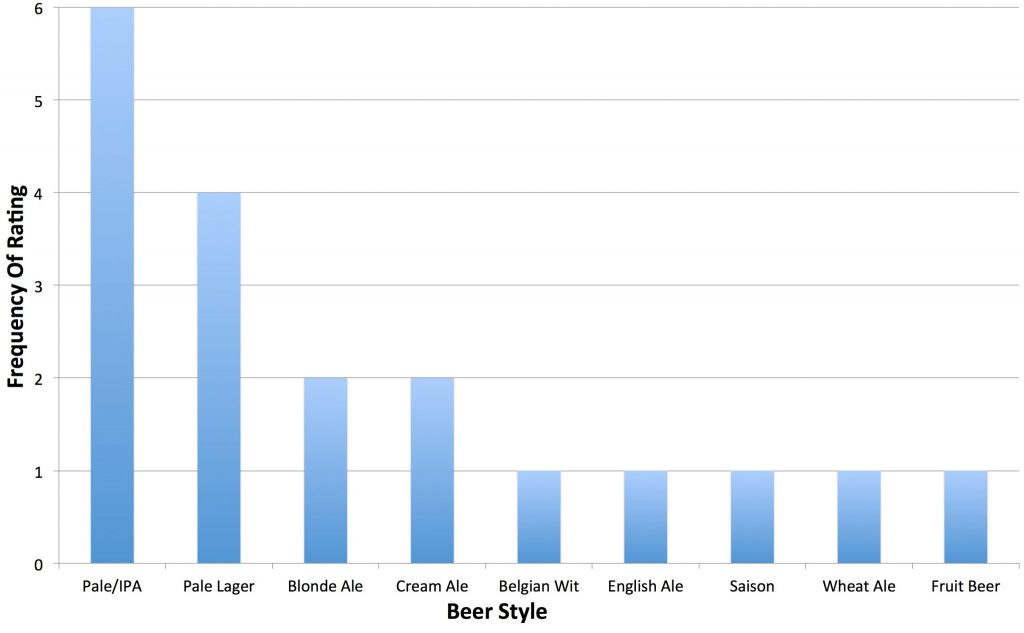












2 thoughts on “The Hop Chronicles | Experimental #04190 (2016) Pale Ale”
It would be interesting to see how tasters perceive some of these hops with a back drop of different styles. This hop might elicit different responses when paired with a lager yeast and would love to see the changes in a spider from beer to beer. Same hopping regimen, different grist/yeast. I wonder if people misinterpret yeast derived esters.
Could you provide more detail in how you ran the test? Specifically, were participants allowed to discuss the beer while they were performing the test?